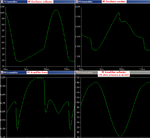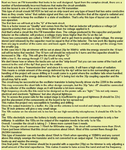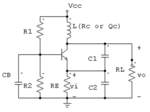Eshal
Advanced Member level 1
- Joined
- Aug 29, 2012
- Messages
- 470
- Helped
- 16
- Reputation
- 32
- Reaction score
- 15
- Trophy points
- 1,298
- Location
- Nowhere :)
- Activity points
- 5,149
Yes, I also tried.I used a different LC calculator website:
88MHz, 0.1uH. Ct= 32.7pf.
100MHz, 0.1uH. Ct= 25.3pf.
108MHz, 0.1uH. Ct= 21.7pF.
Right sir. Trimmer capacitance is reduced.You forgot that C7, stray capacitance of the wiring and the capacitance of the transistor reduces the required capacitance from the trimmer capacitor.
It means, it is a common collector configuration and not a common base configuration. What would be the output impedance of the RF Oscillator?The RF oscillator has the output from its emitter which is a low impedance (emitter-follower). When I tried the output from its collector then it stopped oscillating.
How can you say it operates in class A?R8 biases the RF amplifier transistor with base current (177uA) so it operates in class-A.



